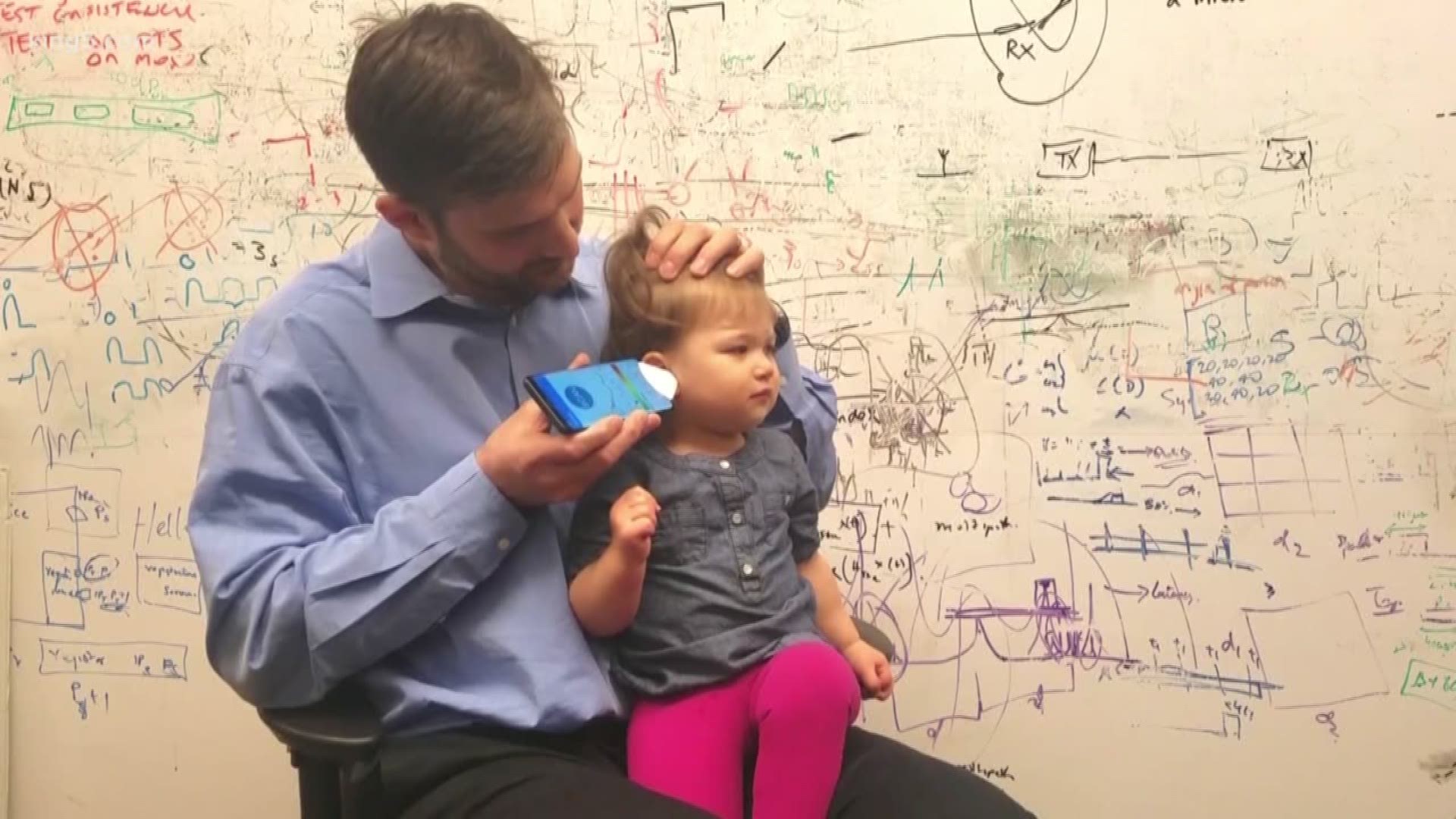SEATTLE — Every parent knows the dreaded ear tug or sudden unexplained fever making their child fuss.
But sometimes, the symptoms of an ear infection are silent and dangerous. It's one of the most common reasons families end up in the pediatrician’s office.
While they can drive both parents and kids crazy, ear aches can also cause long-term damage if not treated.
"There can be some hearing loss that can happen if fluid builds up behind the eardrum, which can just lead to more frustration in the child," said Dr. Randy Bly, an assistant professor of otolaryngology at Seattle Children's.
"We realized that there's information that could be obtained with simply what's available on a smartphone using the speaker and the microphone," explained Dr. Bly.
And just like that, in eight short months, the Ear Health Detector app was created.
Well, they make it seem easy. Seattle Children’s collaborated with some very smart people; co-first author, Justin Chan, a Ph.D. student, co-author, Shyam Gollakota, an associate professor and doctoral student, co-author, Rajalakshmi Nandakumar, all at the University of Washington's, Paul G. Allen School of Computer Science & Engineering. Along with co-first author, Dr. Sharat Raju, a surgical resident in otolaryngology, head and neck surgery at UW Medicine.
Together they used science, math, and medicine to design an algorithm and eventually an app intended for parents.
"A key advantage of our technology is that it does not require any additional hardware other than a piece of paper and a software app running on the smartphone,” explained associate professor Gollakota.
"We can actually do this on a smartphone because the specialist tools, all they do is they send out acoustic chirps. They have a very similar technique and we can actually replicate that on a smartphone," said Chan.
While using the app, the phone will emit a series of soft audible chirps into the ear. Those sound waves are then echoed back into the smartphone. In an ear without fluid build-up, the sound will be absorbed.
"When you have fluid in the ear, it actually makes the ear stiff. So what that means is that more sound is reflected back along the ear canal and you can actually look at how much sound is reflected back to determine if there is fluid," said Chan.
The app will feature a printable template so that parents can cut and fold a small piece of paper into a funnel or cone and place it at the base of the phone over the speaker and microphone and tape it in place. It's then directed into the child’s ear where the app can play the audible chirps and listen for the response.
Bly tested 53 children between the ages of 18 months and 17 years old. His conclusion is that the app proved to be extremely accurate.
And even though younger children might be miserable, their reaction to the process was surprising.
"We found that maybe because it's a smartphone and most kids tend to like smartphones, but when you hold it up to their ear and play the little chirp they would almost always just kind of kind of have a little pleasant smile and they would almost hold their head still during the test, which made it really easy to do."
The app also keeps a record of all the tests, so doctors can see if there is an ongoing issue that may require more aggressive treatment.
But it also gives parents confirmation of what's bugging their babies.
It’s hoped the Ear Health Detector app will be approved for parents in about a year and it also is expected to be a valuable tool in developing countries.
This story is sponsored by Seattle Children's.

